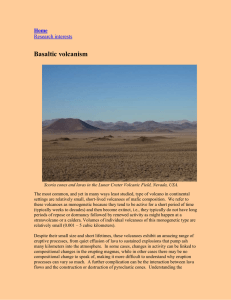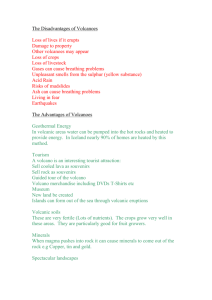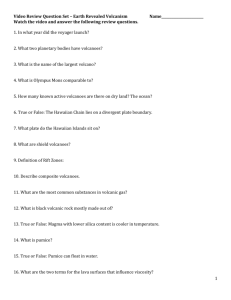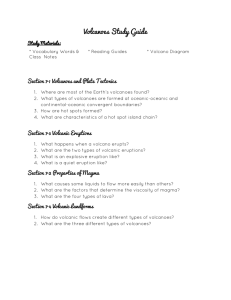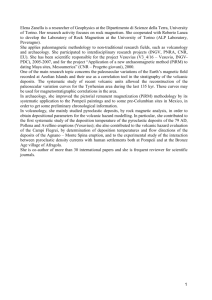volcaniclastic_and_s..
advertisement
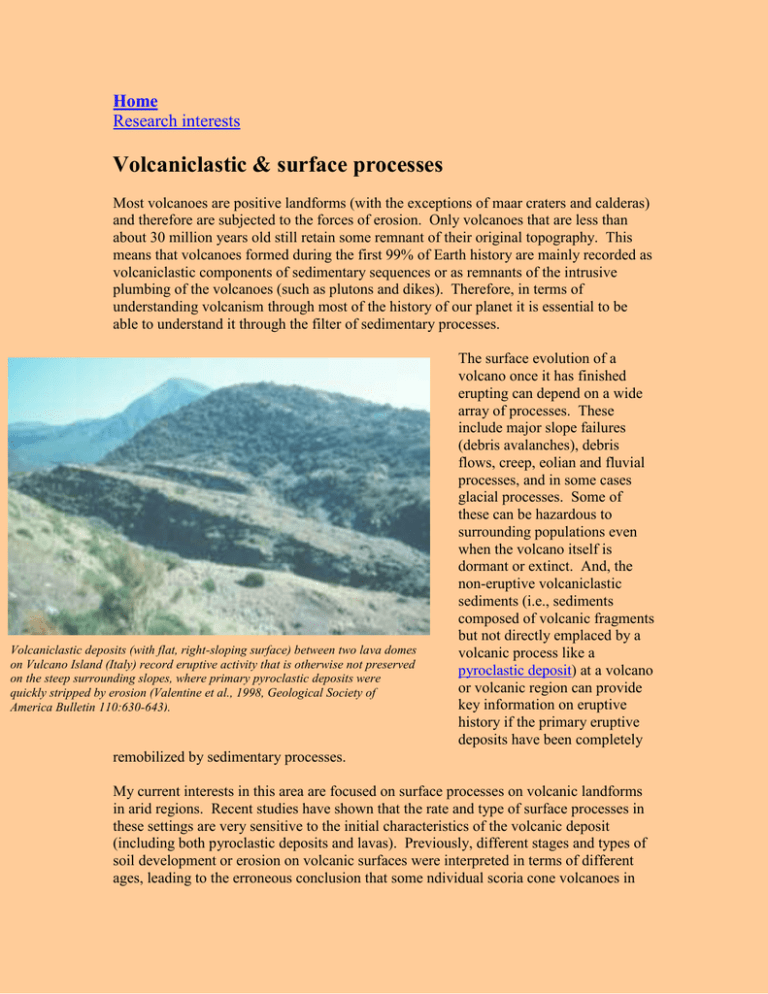
Home Research interests Volcaniclastic & surface processes Most volcanoes are positive landforms (with the exceptions of maar craters and calderas) and therefore are subjected to the forces of erosion. Only volcanoes that are less than about 30 million years old still retain some remnant of their original topography. This means that volcanoes formed during the first 99% of Earth history are mainly recorded as volcaniclastic components of sedimentary sequences or as remnants of the intrusive plumbing of the volcanoes (such as plutons and dikes). Therefore, in terms of understanding volcanism through most of the history of our planet it is essential to be able to understand it through the filter of sedimentary processes. Volcaniclastic deposits (with flat, right-sloping surface) between two lava domes on Vulcano Island (Italy) record eruptive activity that is otherwise not preserved on the steep surrounding slopes, where primary pyroclastic deposits were quickly stripped by erosion (Valentine et al., 1998, Geological Society of America Bulletin 110:630-643). The surface evolution of a volcano once it has finished erupting can depend on a wide array of processes. These include major slope failures (debris avalanches), debris flows, creep, eolian and fluvial processes, and in some cases glacial processes. Some of these can be hazardous to surrounding populations even when the volcano itself is dormant or extinct. And, the non-eruptive volcaniclastic sediments (i.e., sediments composed of volcanic fragments but not directly emplaced by a volcanic process like a pyroclastic deposit) at a volcano or volcanic region can provide key information on eruptive history if the primary eruptive deposits have been completely remobilized by sedimentary processes. My current interests in this area are focused on surface processes on volcanic landforms in arid regions. Recent studies have shown that the rate and type of surface processes in these settings are very sensitive to the initial characteristics of the volcanic deposit (including both pyroclastic deposits and lavas). Previously, different stages and types of soil development or erosion on volcanic surfaces were interpreted in terms of different ages, leading to the erroneous conclusion that some ndividual scoria cone volcanoes in the western U.S.A. had erupted over many tens of thousands of years. Rather, the fact that a monogenetic volcano, which is an instantaneous event in terms of geologic time, can produce different types of initial surfaces provides an excellent opportunity to define the effects of those initial properties on surface processes. There is also potential for feedback to volcanology in situations where a volcanic landform is highly degraded but where the surface morphology could give insight into the original eruptive facies. This topic of research is complementary to my overall interests in basaltic volcanic fields in arid regions (see Basaltic volcanism).
